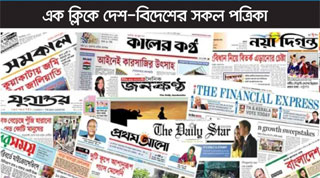The Diversity Visa (DV) Lottery Program, commonly known as the Green Card Lottery, offers individuals from countries with historically low rates of immigration to the United States an opportunity to apply for permanent residency. A critical component of the DV 2025 application is the submission of a compliant photograph. Failure to adhere to the specified photo requirements can lead to disqualification. This guide provides a detailed overview of the DV 2025 Green Card Lottery photo requirements to assist applicants in preparing an acceptable photograph.
1. General Photo Specifications
- Color and Recentness: The photograph must be in color and taken within the last six months to reflect the applicant's current appearance.
- Background: A plain white or off-white background is mandatory. The background should be free from shadows, patterns, or textures.
- Pose and Expression: The applicant must face the camera directly with a neutral facial expression and both eyes open. Smiling, frowning, or any other expressions are not permitted.
- Attire: Wear clothing normally worn on a daily basis. Uniforms, except religious attire worn daily, should be avoided. Headphones, wireless hands-free devices, or similar items are not acceptable in the photo. Eyeglasses are prohibited, except in rare medical circumstances, which must be documented with a signed statement from a medical professional. If eyeglasses are worn for medical reasons:
- The frames must not cover the eyes.
- There must be no glare or shadows obscuring the eyes.
- There must be no reflections that obscure the eyes.
- Head Coverings: Head coverings are only allowed if worn daily for religious purposes. The full face must be visible, and the head covering must not cast shadows on the face.
2. Technical Specifications
- Dimensions: The image must be square, with a minimum acceptable dimension of 600 x 600 pixels and a maximum of 1200 x 1200 pixels.
- File Format and Size: The photo must be in JPEG (.jpg) format with a file size equal to or less than 240 kilobytes (kB).
- Color Depth: The image must be in color (24 bits per pixel) in sRGB color space, which is the standard output for most digital cameras.
- Compression: If compression is necessary to meet the file size requirement, the compression ratio should be less than or equal to 20:1 to maintain image quality.
3. Composition Requirements
- Head Size and Position: The head should be centered within the frame. The size of the head, measured from the bottom of the chin to the top of the head, should be between 50% and 69% of the image's total height. This equates to approximately 1 inch to 1 3/8 inches (22 mm to 35 mm).
- Eye Position: The eyes should be positioned between 56% and 69% of the image's height from the bottom of the photo.
4. Photo Quality
- Focus and Clarity: The image must be in focus, clear, and free from visible pixels or printer dots.
- Lighting: Ensure the photo is evenly lit to avoid shadows on the face or background. Overexposed or underexposed images are not acceptable.
- Digital Alterations: The photo must not be digitally enhanced or altered to change the applicant's appearance. This includes retouching, airbrushing, or any form of image manipulation.
5. Special Considerations
- Children and Infants: When photographing infants, no other person should be in the photo. The child should be looking at the camera with eyes open. To achieve this:
- Lay the baby on their back on a plain white or off-white sheet and take the photo from above.
- Ensure there are no shadows on the baby's face.
- Alternatively, cover a car seat with a plain white or off-white sheet and take the photo with the child in the seat.
- Scanning an Existing Photo: If scanning a physical photo:
- The photo must be 2 x 2 inches (51 x 51 mm).
- It should be scanned at a resolution of 300 pixels per inch (12 pixels per millimeter).
6. Common Mistakes to Avoid
- Obstructed Face: Ensure nothing covers any part of the face, including hair, shadows, or accessories.
- Inappropriate Background: Avoid patterned, dark, or cluttered backgrounds.
- Incorrect Head Position: Do not tilt or turn the head; it must be straight and centered.
- Poor Lighting: Avoid shadows, glares, or uneven lighting.
- Wearing Glasses: Unless medically necessary (with documentation), glasses are not permitted.
7. Tools and Resources
The U.S. Department of State provides a free photo tool to assist applicants in cropping and sizing their photos correctly. This tool can be accessed at https://travel.state.gov. Additionally, reviewing the Photo Composition Template and Photo Examples

















